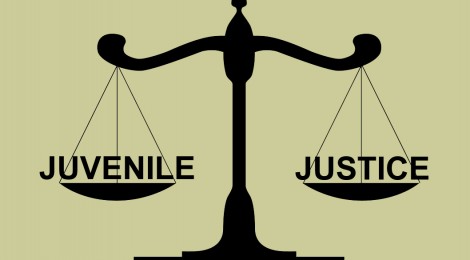
Juvenile Justice
Juvenile Justice
Pol 6700-03
Juvenile justice continues to change in ways that make it look more like the adult criminal justice system. Concern over juvenile violence, gang activity, school shootings, and all the like dangers that circle juveniles have convinced policy makers that the juvenile system coddles dangerous young offenders; as a result, there has been a movement to toughen juvenile justice standards and to shift the juvenile court away from its traditional Parens Patriae philosophy as well as increase in sanctions for juveniles, greater offender accountability, and restrictions in terms of the privacy juveniles have historically enjoyed.
In many states, punishing minors in the court of law may be seen by some as morally wrong and unfair to still growing teenagers. In my Dossier, I will explain why juveniles should not be tried and punished under the same judicial system as adults. My major complex with this idea is the importance of the words “still growing teenagers!!”
I stand strong when I say, I do believe that the punishment now put upon the minors in our society has become very harsh and non-reformatory. Reason being, that the effects transpiring throughout the time of incarceration will change and effect these youths in a negative way further causing more harm, recidivism and institutional habits. According to research most state legislatures have instituted punitive reforms in response to rising rates of youth crimes, including provisions that transfer an increasing number and range of adolescents to criminal courts for adult prosecution. Proponents assert that juvenile court sanctions and services constitute neither just nor effective responses to savvy juvenile offenders and propose that criminal prosecution will insure more proportionate punishments, provide more effective deterrence, and achieve greater incapacitation. (Bishop, 2000) The evidence thought not definitive, suggests that most of those assertions deterrence, and achieve greater incapacitation. What it did see to show was that the expansive transfer policies send many minor and nonthreatening offenders with special needs into correctional systems ill prepared to handle them. The transfers resulted in more severe penalties for some offenders, but there is no evidence that it achieves either general or specific deterrent effects. According to Bishop, further helping me to come to my point and bases of reasoning for not supporting juveniles tried as adults is there is credible evidence that prosecution and punishment in the adult system increase the likelihood of recidivism. Transfer also exposes young people to heightened vulnerability to a host of unfortunate experiences and outcomes.
Over the years the transfer of juvenile defenders to criminal courts for adult prosecution has be justified on the grounds that juvenile courts are unequipped to handle two cases of offenders. Sure as seriously violent crimes and chronic offenders. In reference to cases that deal with these topics the public has historically demanded heavy penalties that exceed the authority of the juvenile court. In terms of violent crimes, removal to the criminal court makes possible the imposition of harsh punishments believed to be more justly deserved. For the other class, it’s traditionally targeted for removal consisted with chronic offenders who have been afforded all appropriate interventions at the juvenile court’s disposal and have not responded to them. That further efforts to reforming them would be futile. (Bishop, 2000) Hence, the transfer to criminal courts that is better equipped to incapacitate those who present a continuing threat to the public welfare. My question though has always been: what happen to the welfare of juveniles? Juveniles differ from adults in ways that generally make criminal processing inappropriate and counterproductive. Due to their limited ability to anticipate and weigh long-term consequences makes it unlikely that threats of criminal sanctions will deter them, therefore bringing attention, to state-raised kids and Institutionalized mind-frames. Reminds me of this book I read last semester call IN THE BELLY OF THE BEAST by Henry Abbout. A book surrounded by prison stories from a man name Henry Abbout who was a “state raise child”. While reading this book I noticed that life as we the people in society, is very different compared to anyone in prison mostly or all of their life. The level of maturity, experience and growth that people in society develop will never be developed in someone institutionalized. Adolescents are immature. Their lesser capacities for reasoning and moral judgment diminish their culpability and render them undeserving of the full burden of retributive punishments.
When referring to youths or adolescent most would characterize them as vulnerable, depend and malleable. Referring Bishop Adolescence is understood as a transitional period, which involves exploration of new roles and behaviors. In this view youth’s bad actions are more often transitory than prophetic. Social policy gives youths “room to reform” by responding to adolescent missteps in ways that do not interfere with the normal transition to responsible adulthood. From that perspective, transfer is ill advised because it exposes young people to the stigmatizing consequences of a criminal conviction and because it may result in lengthy incarceration that fosters dependency at a critical stage when youths should be moving towards independence. This belief, also the one I agree with is what I strongly believe should still be in place now instead of this drastic and life-damaging life changer began.
Children are malleable with that being said, it implies that youths are suited to efforts to shape them in positive ways, making rehabilitative strategies particularly attractive. This traditional theory developed under the Parens Patrae mission. In the 1970’s juvenile crimes increased leading to questions of the juvenile courts. A “get tough” movement was born that gained momentum in the late 1980’s. In these days, ideas about adolescent offenders began to shift. The media and public officials portrayed them as vicious and savvy, challenging the more benign Images of the past. Legislators demanded more from the juvenile courts. (Bishop, 2000) The transformation of transfer policy has been quick and dramatic. Between the years 1992 and 1997, states took a far more sweeping approach and lowered the maximum age of the juvenile court’s original jurisdiction, thereby transferring entire age categories of youth offenders no matter what the offense. The three broad goals define the structure of the inquiry: 1) To identify how transfer practices and treads affect the organization and operation of juvenile and criminal courts and correctional agencies; 2) To review what is known about the effects on young offenders of criminal court processing and exposure to adult correctional environments; 3) And to consider the implications of transfer for crime control. (Bishop, 2000) As we can see some way along the line, seems as though the courts have lost sight of what the name Juvenile or adolescence really means and as I have stated above it means vulnerable, dependent, malleable, and unable to make rational decisions. For that reason as well as the fact that traditional views has been that criminal punishment does serious harm by exposing youths to the corrupting influence of mature and experienced offenders in adult correctional facilities.
My overall conclusion is that juveniles should not be tried in the same judicial systems as adults. The punishment now put upon the minors in our society has become very harsh and non-reformatory. The direction of these reforms of retribution, policy makers fail to comprehend or are willing to ignore the jeopardy into which large numbers of adolescents are placed as a result of criminal processing and punishment. Reason being, that the effects transpiring throughout the time of incarceration will change and effect these youths in a negative way further causing more harm, recidivism, institutional habits. We need to go back to thinking of the welfare of our kids and nurture them, instead of locking them up and throwing away keys and ignoring the problem. That there are too much of our young people behind bars.
Work cited
-Bishop, D. (2000). Juvenile offenders in the adult criminal justice system. (Vol. 27, pp. 81-167). Chicago: The University of Chicago Press.








